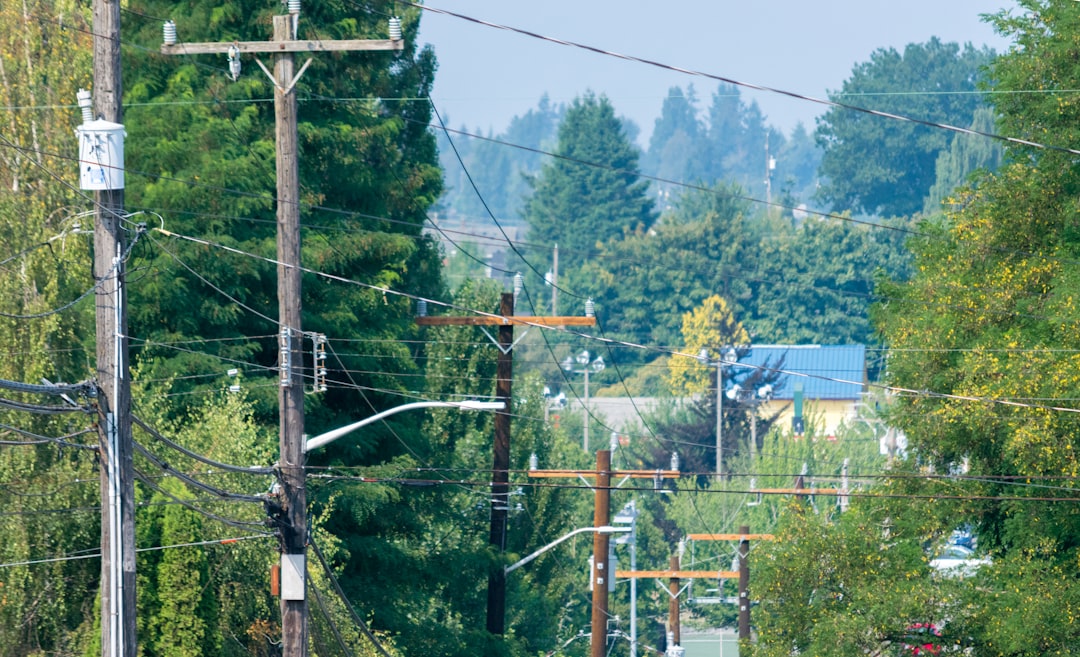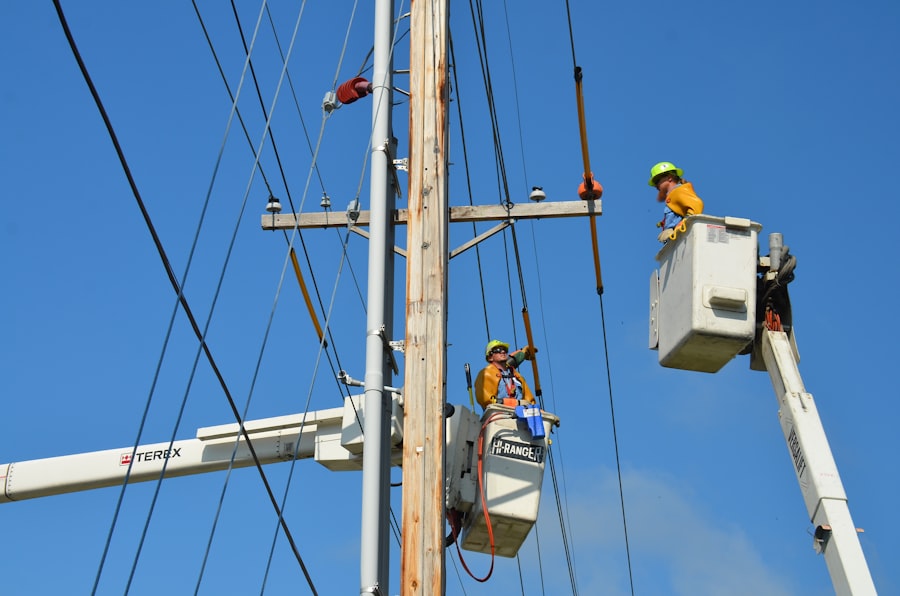Utility rate hikes are adjustments made by service providers, such as electricity, water, and gas companies, to the prices they charge consumers. These increases can stem from various factors, including rising operational costs, infrastructure improvements, and regulatory changes. As a consumer, it’s essential to understand that these hikes are often necessary for utility companies to maintain and enhance their services.
However, they can also lead to significant changes in your monthly expenses, making it crucial to stay informed about the reasons behind these adjustments. When a utility company announces a rate hike, it typically goes through a regulatory process that involves public hearings and assessments. This process is designed to ensure that the increase is justified and that consumers have a voice in the matter.
As a consumer, you may find it beneficial to attend these hearings or follow the discussions online. Understanding the rationale behind the rate hikes can help you better prepare for the financial impact on your household.
Managing increased utility costs requires a combination of awareness and proactive strategies. One effective approach is to conduct an energy audit of your home. This process involves assessing how energy-efficient your appliances and systems are and identifying areas where you can improve efficiency.
By making small changes, such as sealing drafts or upgrading to energy-efficient appliances, you can significantly reduce your utility bills over time. Another strategy is to adjust your usage habits. For example, consider using energy-intensive appliances during off-peak hours when rates may be lower.
Additionally, being mindful of your water usage can lead to substantial savings on your water bill. Simple actions like taking shorter showers or fixing leaks can make a noticeable difference in your monthly expenses. By adopting these strategies, you can mitigate the financial impact of utility rate hikes while also contributing to a more sustainable environment.
Identifying the Factors Contributing to Rate Hikes
Factors Contributing to Rate Hikes Claim frequency Increased number of claims filed Severity of claims Higher costs associated with claims Underwriting performance Poor performance in underwriting Market conditions Changes in the insurance market Understanding the factors that contribute to utility rate hikes is crucial for consumers seeking to navigate these changes effectively. One primary reason for rate increases is the rising cost of raw materials and energy sources. For instance, fluctuations in natural gas prices can directly affect your heating bill during winter months.
Additionally, regulatory requirements aimed at improving environmental standards may necessitate costly upgrades for utility companies, which can ultimately be passed on to consumers. Infrastructure maintenance and upgrades also play a significant role in rate hikes. Aging pipelines, power lines, and treatment facilities require regular maintenance and investment to ensure reliable service.
As a consumer, recognizing that these improvements are essential for long-term service reliability can help you understand the necessity of rate increases. While it may be frustrating to see higher bills, knowing that these funds are often directed toward enhancing service quality can provide some reassurance.
Exploring Alternative Energy Options
In light of rising utility costs, exploring alternative energy options can be an effective way to reduce your dependence on traditional utility providers. Renewable energy sources such as solar and wind power have gained popularity in recent years due to their potential for cost savings and environmental benefits. By investing in solar panels for your home, you can generate your own electricity and potentially lower or eliminate your monthly utility bills.
Additionally, many communities offer incentives for adopting renewable energy solutions.
These incentives may include tax credits, rebates, or grants that can help offset the initial investment costs associated with solar or wind energy systems.
As you consider alternative energy options, research local programs and resources available in your area.
Transitioning to renewable energy not only helps you manage rising utility costs but also contributes to a more sustainable future.
Advocating for Consumer Rights in the Face of Rate Hikes
As a consumer facing utility rate hikes, it’s essential to advocate for your rights and ensure that you are treated fairly by service providers. Familiarize yourself with local regulations and consumer protection laws that govern utility companies in your area. Understanding these laws empowers you to voice concerns and seek recourse if you believe a rate hike is unjustified or excessive.
Joining consumer advocacy groups can also amplify your voice in discussions about utility rates. These organizations often work to represent consumer interests at public hearings and engage with regulatory bodies on behalf of residents. By participating in these groups, you not only gain valuable insights into the utility industry but also contribute to collective efforts aimed at holding providers accountable for their pricing practices.
Seeking Assistance Programs for Financial Relief
If you find yourself struggling with increased utility costs, various assistance programs may be available to help alleviate some of the financial burden. Many states offer programs designed to assist low-income households with their utility bills, providing financial aid or discounts based on income levels. Research local resources and eligibility requirements to determine if you qualify for any assistance programs.
In addition to state-sponsored programs, non-profit organizations often provide support for families facing financial hardships due to rising utility costs. These organizations may offer one-time grants or ongoing assistance to help cover bills during difficult times. Don’t hesitate to reach out for help; utilizing available resources can provide much-needed relief and allow you to focus on other essential aspects of your life.
Evaluating the Long-Term Effects of Utility Rate Hikes
While immediate impacts of utility rate hikes are often felt in monthly budgets, it’s essential to consider the long-term effects as well. Over time, consistent increases in utility rates can lead to significant financial strain on households, particularly those with fixed incomes or limited financial flexibility. As rates continue to rise, families may find themselves forced to make difficult choices about their spending priorities.
Moreover, long-term rate hikes can influence broader economic trends within communities. As residents allocate more of their budgets toward utilities, they may have less disposable income for other essential goods and services. This shift can impact local businesses and overall economic growth in the area.
By evaluating these long-term effects, you can better understand the broader implications of rising utility costs on both personal finances and community well-being.
Communicating with Utility Providers about Rate Hikes
Effective communication with your utility provider is vital when navigating rate hikes. If you have questions or concerns about an increase in rates, don’t hesitate to reach out directly to customer service representatives. They can provide clarity on the reasons behind the hike and any available options for managing costs.
Additionally, consider participating in community forums or public meetings hosted by your utility provider. These events often provide opportunities for consumers to voice their concerns and ask questions directly to company representatives. Engaging in open dialogue not only helps you gain insights into the company’s operations but also allows you to advocate for fair pricing practices on behalf of yourself and other consumers.
Utilizing Energy-Efficient Practices to Offset Rate Hikes
Incorporating energy-efficient practices into your daily routine is an effective way to offset the impact of rising utility costs. Simple changes such as using LED light bulbs instead of traditional incandescent bulbs can lead to significant savings over time. Additionally, investing in smart home technology allows you to monitor and control energy usage more effectively.
Consider implementing habits like unplugging devices when not in use or using power strips with timers to reduce phantom energy consumption. These small adjustments can accumulate over time, resulting in lower utility bills despite rising rates. By prioritizing energy efficiency in your home, you not only save money but also contribute positively to environmental sustainability.
Planning for Future Rate Hikes and Budgeting Accordingly
As utility rates continue to fluctuate, it’s essential to plan for future increases proactively. Start by reviewing historical trends in utility rates within your area; this information can provide valuable insights into potential future hikes. By anticipating these changes, you can adjust your budget accordingly and avoid being caught off guard by sudden increases.
Consider setting aside a portion of your monthly budget specifically for potential utility rate hikes. This proactive approach allows you to build a financial cushion that can absorb unexpected increases without causing significant disruption to your overall financial health. By planning ahead and budgeting wisely, you can navigate the challenges posed by rising utility costs with greater confidence and stability.
In conclusion, understanding utility rate hikes is crucial for managing their impact on your finances effectively. By staying informed about the factors contributing to these increases and exploring strategies for cost management, you can navigate this challenging landscape with greater ease. Whether through advocating for consumer rights or exploring alternative energy options, taking proactive steps will empower you as a consumer in an ever-evolving market.
To gain a deeper understanding of the factors influencing utility rate hikes, you may find it helpful to read the article available on How Wealth Grows. This resource provides insights into economic trends and their impact on utility pricing, which can help consumers better navigate these changes. For more information, visit How Wealth Grows.
WATCH THIS! Why Wall Street Is Exploding Your Water Bill
FAQs
What are utility rate hikes?
Utility rate hikes refer to an increase in the charges for essential services such as electricity, water, and natural gas. These increases are typically approved by regulatory agencies and can impact the monthly bills of consumers.
Why do utility companies implement rate hikes?
Utility companies may implement rate hikes to cover the rising costs of production, infrastructure maintenance, and investments in new technologies. Additionally, they may seek to recoup expenses related to regulatory compliance and environmental initiatives.
How do utility rate hikes affect consumers?
Utility rate hikes can lead to higher monthly bills for consumers, impacting their household budgets. This can be particularly burdensome for low-income households and individuals on fixed incomes.
How are utility rate hikes approved?
Utility rate hikes are typically subject to regulatory approval by state or federal agencies. These agencies review the justifications provided by the utility companies and assess the potential impact on consumers before granting permission for the rate increases.
Are there any measures in place to protect consumers from excessive rate hikes?
Regulatory agencies often have mechanisms in place to ensure that utility rate hikes are reasonable and justified. These may include public hearings, consumer advocacy groups, and the requirement for companies to demonstrate the need for the increases.
What can consumers do in response to utility rate hikes?
Consumers can explore options for energy efficiency, such as using energy-saving appliances and implementing conservation measures to reduce their overall utility usage. They can also engage with regulatory agencies and consumer advocacy groups to voice their concerns about the impact of rate hikes.

